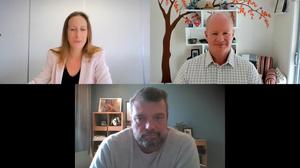For many brands today, the desire to become more customer-centric has led to the realisation that existing operational processes or a product-centric model simply aren’t going to cut it.
As a result, the hunt is on for new frameworks that truly place the needs of the customer at the heart of decision-making.
One option finding favour is a framework with the innocuous name of jobs-to-be-done. Developed by the US-based Clayton Christensen Institute, the framework eschews traditional customer categorisation by attributes of age, race or marital status, and instead focuses on the circumstances that arise in customers’ lives, with the main determinant for developing and marketing products being the actual problem the customer is trying to solve.
It is a technique that has proven particularly useful for customer experience advocate, Christian Bowman, in his work for groups including Bond University, RSPCA Queensland and SmartClinics.
“It allows organisations or professionals to look at problems with a different lens,” he says. “It’s really about understanding what the higher purpose is, and what emotionally is motivating them, as opposed to what functionally is motivating them.
“From a marketing perspective, it is great because you look through the lens of your customer – emotionally and functionally – and understand the different tasks. It gives you some great options in terms of testing different angles.
“From an innovation angle, it is also a great framework to go forward with, knowing that the customer is always involved.”
For example, in the example of a student choosing what they will study at university, Bowman says their decision-making process might be logically driven but doesn’t actually connect with what they might want in the future.
“As you start to overlay the jobs-to-be-done framework, you actually map that out formally to understand where they are and what challenges they have now, and what challenges they might have in the future, and then what you believe you are expected to do to help them get there,” Bowman explains.
A project for RSPCA Queensland saw Bowman working to understand people’s motivations to perform activities such as donating or adopting an animal. While it might be assumed people adopt animals for altruistic reasons, jobs-to-be-done revealed that decision making can also be ego-driven, and based on how the person’s action will be perceived by their peers.
Bowman says jobs-to-be-done can also be beneficial in highlighting the importance of a brand.
“When you talk about the emotional side of things, which is potentially the key driver depending on what you are selling or servicing, there is a direct relationship between brand recognition and brand affinity and someone’s personal image,” he says. “With the jobs-to-be-done framework, you can actually break it down into more granular segments.”
Follow CMO on Twitter: @CMOAustralia, take part in the CMO conversation on LinkedIn: CMO ANZ, join us on Facebook: https://www.facebook.com/CMOAustralia, or check us out on Google+: google.com/+CmoAu












